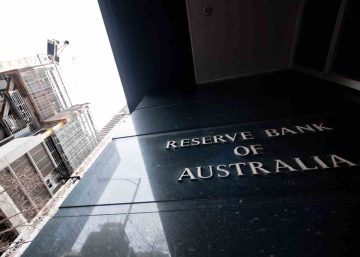Guide to QBCC financial requirements and reporting
As a QBCC licence holder, you need to report financial information to QBCC annually to maintain your licence. There’s a lot of confusion around QBCC financial requirements so in this article we’ll explain your obligations and the key concepts all licensees need to be aware of.
There are three aspects to your licence:
- Licence renewal – the payment of a renewal fee to keep your licence current. This can be paid for one year or three years.
- Annual Reporting – is a once-a-year submission based on the information that is required for each licensee’s maximum revenue. These will be assessed to confirm licensees are meeting the Minimum Financial Requirements (MFR) of the regulation.
- MFR Reporting – applies when you apply for a new licence or when certain events occur (more on this later).
Let’s cover off on these key QBCC terms first before we delve into the nitty gritty of MFRs.
Annual Financial Reporting
Annual financial reports were introduced to check the financial strength of contractor-grade licensees in Queensland. Annual reporting is mandatory. When you submit your financial information, QBCC checks the financial health of your business to assess whether you meet the MFRs.
Annual reporting is a once-a-year submission. The information you’ll need to submit and reporting date differs for each QBCC financial category. How do you know what financial category you fit into? Your financial category is based on your maximum allowable revenue ranging from self-certifying category 1 at the lowest end to Category 7 at the highest end.
QBCC Annual Reporting:
| Financial Categories | Annual Turnover | Reporting Date | Required information |
| Self-Certifying 1 | Up to $200,000 | 31 March | Profit and loss figures, asset and liabilities figures |
| Self-Certifying 2 | Up to $800,000 | 31 March | As above |
| Categories 1 to 3 | $800,000 to $30,000,000 | 31 December | Profit and loss statement, balance sheet, aged debtors and creditors, statement of cash flow. |
| Categories 4 to 7 | Over $30,000,000 | 31 December | As above plus notes to the financial statements, written declaration and description of the measurement. |
If you don’t submit your annual report, the QBCC can cancel your licence. Make sure you provide your information to your accountant as early as possible so they can prepare your financial reports and ensure your numbers are right.
Minimum Financial Requirements
The Minimum Financial Requirements (MFR) Regulation was introduced on 1 January 2019 to help ensure every building contractor in Queensland has a strong and financially sustainable business with an appropriate level of working capital. The goal of these requirements is to reduce financial failure, liquidations, and bankruptcy.
In short, to maintain your licence, you need to demonstrate annually that you have an appropriate level of working capital by meeting the Net Tangible Assets position and minimum Current Ratio. These are key financial concepts and we’ll explain them in greater detail later.
MFR Report
At times, you may be required to demonstrate that you meet the Minimum Financial Requirements by supplying an MFR Report. This report is different to an Annual Report and is only required when:
- you apply for a new licence (Category 1 or above);
- your Net Tangible Asset position decreases by more than 20% for Categories 4-7 licensees and 30% for all other licensees;
- you no longer meet the minimum Current Ratio of at least 1:1;
- your Maximum Revenue (MR) requires adjusting (only for Categories 1-7);
- there is a significant change to your business structure (e.g. change of ownership or executive officers);
- there is a restructure of a partnership; or
- QBCC requests it.
MFR reports can only be prepared by a qualified accountant and must be accompanied by signed financial statements. The accountant must be independent of you as the licensee (i.e. not an employee, company officeholder, investor, shareholder, partner or an immediate family member). Accountants can be excluded by the QBCC if they have given false or misleading information within the previous 3 years so it’s worth checking the register of excluded accountants to make sure your accountant is allowed to prepare your reports.
Meeting the QBCC Minimum Financial Requirements
1.Current Ratio
Current ratio is worked out by comparing a licensee’s current assets to their current liabilities. This helps to determine the business’s financial viability. The current ratio is your current assets divided by your current liabilities and must be at least 1:1. This means that for every dollar of current liabilities, you must have at least a dollar in current assets.
What are current assets?
These are the things you own or are owing to you that you can convert into cash within the next 12 months. For example, accounts receivable (debtors), stock (or work in progress) and obviously cash.
What are current liabilities?
These are the amounts you owe that you expect to pay within the next 12 months such as; accounts payable (creditors), credit cards, GST, BAS and also repayments of loans and leases.
For example, if the business has a car loan, then 12 months of repayments are current liabilities. Similarly, if the business owns a property that is rented out then the next 12 months of rent payments are a current liability.
As you can see, you need to be careful about how you buy assets and finance them to ensure that you do not fail the ratio by having too many current liabilities. The simple act of financing a new car for the business may have an unintended knock-on effect.
Another thing to note is that the Current Ratio must be met every single day. It’s not an end of year calculation, it’s an everyday calculation.
For a deeper dive into profitability and liquidity metrics, read our article on the 8 key numbers every business should monitor.
2. Net Tangible Assets
The other financial requirement for a QBCC licence is maintaining a minimum level of Net Tangible Assets (NTA). The required NTA differs for each of the QBCC financial categories and is calculated on that category’s Maximum Revenue (turnover). For example, for a sales turnover of $1.2m you need to have $66,000 in NTA.
Maximum Revenue is the turnover that your business is allowed to do over a 12-month period. The 12-month period is a rolling 12 months and not based upon a financial year. For example, the period can be 15/1/21 to 14/1/22 or 1/12/21 to 30/11/22.
Why does QBCC put a limit on the revenue a licensee can earn? To ensure that it has sufficient working capital to be financially sustainable.
QBCC Net Tangible Assets Requirements:
| Financial Category | Maximum Revenue | Net Tangible Assets |
| Self-Certifying 1 | Up to $200,000 | $12,000 |
| Self-Certifying 2 | Up to $800,000 | $46,000 |
| Category 1 | $800,001 to $3,000,000 | $46,001 to $156,000 |
| Category 2 | $3,000,001 to $12,000,000 | $156,001 to $480,000 |
| Category 3 | $12,000,001 to $30,000,000 | $480,001 to $1,200,000 |
| Category 4 | $30,000,001 to $60,000,000 | $1,200,001 to $2,400,000 |
| Category 5 | $60,000,001 to $120,000,000 | $2,400,001 to $4,800,000 |
| Category 6 | $120,000,001 to $240,000,000 | $4,800,001 to $14,400,000 |
| Category 7 | >$240M | >$14.4M |
Calculating NTA:
Your NTA is an adjusted amount based upon your assets (everything you own) less your liabilities (everything you owe). If you have a company structure, this means everything the company owns and owes.
NTA = [Entity’s Assets] – [Entity’s Liabilities] – [Entity’s Intangible Assets*] – [Entity’s Disallowed Assets**]
* Examples of intangible assets are goodwill, borrowing costs, patents and trademarks.
** Examples of disallowed assets are boats, collector items, personal furniture, superannuation, jet skis etc.
Your NTA cannot decrease by more than 30 per cent (or 20 per cent if you are a category 4-7 licensee) from the amount previously stated to the QBCC.
Just like the Current Ratio, the NTA calculation is per day (not an end of year calculation), so you need to ensure you always comply.
For sole traders, calculating NTA is simple: Personal assets less personal liabilities.
For companies, partnerships, trusts and groups, calculating NTA becomes more complex and therefore, more prone to errors. This is where a lot of licensees find themselves in trouble. Having the right business structure and keeping a watchful eye on who owns what is vital.
FREQUENTLY ASKED QUESTIONS
What if my Maximum Revenue goes over the allowable limit?
There is a leniency of 10% on your allowable turnover. For example, if your allowable turnover was $1.2M then you could generate an extra $120,000 ($1.32M in total) and not be in breach of the rules. Remember though, it is a rolling 12-month period so turnover needs to be reviewed constantly to ensure that you don’t go over the threshold.
If you think you are going to exceed your Maximum Revenue by 10% or more, you must first provide a MFR Report that supports the increase. There are set periods of time that this MFR must be completed by. Keep in mind that you’ll need to allow at least a month to get your report completed and submitted to QBCC so make sure you are always on top of your numbers.
For an in-depth guide to the key business numbers you need to monitor and manage, download our “Know Your Numbers” Guidebook.
Do I only include turnover (or income) I earn from building?
No, it is ALL turnover (or income) that you earn from all sources (except for salary or wages that you receive if you are an employee rather than a contractor).
Do I only include turnover that my company makes in Queensland?
No, all turnover is included for the company.
My trading entity is a trust. Who owns what for QBCC purposes?
The net tangible assets, for QBCC purposes, is based on the net tangible assets of the trustee company or trustee individual (not the trust), combined with the amount being assured by a covenantor i.e. director of the company, or beneficiary of the trust. Please note, this option is not available for SC1 and SC2 licensees. That total net tangible asset amount determines the maximum revenue amount set for the licence.
For example, Licensee Pty Ltd trades through a trust structure, namely the Licensee Family Trust. The Licensee Family Trust has net tangible assets of $8,731 (noting that any intangible or disallowed assets need to be deducted from the net asset position). Licensee Pty Ltd has net tangible assets of $10 and relies upon a deed of covenant and assurance in the amount of $56,000 from director, John Bloggs. The total net tangible asset amount of $56,010 (i.e. $10 from the trustee company and $56,000 being assured by the director) will provide Licensee Pty Ltd with a maximum revenue amount of $1,000,200.
The actual revenue for a licensee that is a trustee of a trust needs to include all revenue received by both the trustee (if any) as well as the trust.
Whilst QBCC does not licence trusts (only the trustee entity), the financial information for the trust will usually be required.
What if my financial information for annual reporting shows that I don’t have enough assets?
For licensees in categories from SC1 to Category 3, the QBCC may take action in relation to non-compliant financial information where appropriate. For licensees in Categories 4 to 7 it is likely that the QBCC will follow up on non-compliant financial information which may result in a show cause notice as to why the licence should not be suspended.
Are any licensees exempt from QBCC financial reporting requirements?
Yes. The following licensees and applicants do not have to meet any MFR obligations:
- Nominee supervisor
- Site supervisor
- Occupational licensees.
- Building Certifiers and Pool Safety Inspectors are also exempt from meeting the minimum financial requirements as these two licences are issued under the Building Act 1975.
Applicants or licensees holding a licence in one or more of the following classes may be exempt from the financial reporting requirements:
- Building design – low rise;
- Building design – medium rise;
- Building design – open;
- Builder – Project Management Services
- Hydraulic services design;
- Site classifier; AND
- hold professional indemnity insurance,
This exemption does not apply where the applicant or licensee is applying for or holds a licence in another class not listed above.
My accountant/I have completed the annual reporting but I received a letter from QBCC saying it hasn’t been done?
Firstly, you need to confirm the licence that you are reviewing. Is it an entity licence or is it a personal licence? Maybe you’ve submitted one but not the other.
In which case, do you need two licenses? In the past, many of our clients had 2 licences because of the way they were structured. What that means is that the entity must pass the ratios and so do you as an individual licence holder.
If you have a personal licence, you can convert this to a nominee licence which can then be used by your business for their trading. Normally you don’t trade in your own name. If you convert it over, then you don’t need to comply with the ratios and therefore have the assets in your own name. This can assist with complying with QBCC for your trading entity.
When to get help
When your financial review process is only undertaken annually, (such as when you do your year-end financial statements and tax returns) the opportunities to make tough decisions, financially restructure, or adjust for changing market conditions are unlikely to be managed appropriately.
We therefore advise regular monitoring of QBCC ratios to ensure any problems are picked up and solved well before you lodge your annual report. This is particularly important if you are worried about:
- Exceeding your Maximum Revenue;
- A decrease in your Net Tangible Assets; or
- Not meeting the Current Ratio (1:1 ratio of current assets to current liabilities) requirements.
Where to get help
Organise a meeting with one of our QBCC specialists who will be able to make sure that you’re meeting the QBCC financial requirements for your licence and work out an action plan if your numbers don’t add up. You can reach us on (07) 3023 4800 or at mail@marshpartners.com.au.
You can find out more about working with Marsh & Partners here. As your Absolute.Account.Ability partner we’re on a mission to make your business life better. We’ll help you set goals for your business, devise an Action Plan to make them happen and meet with you regularly to ensure you stay on track
Share this article on LinkedIn:







